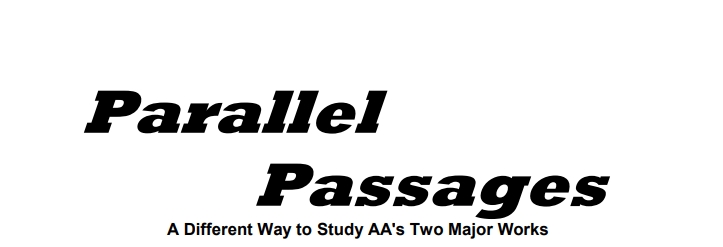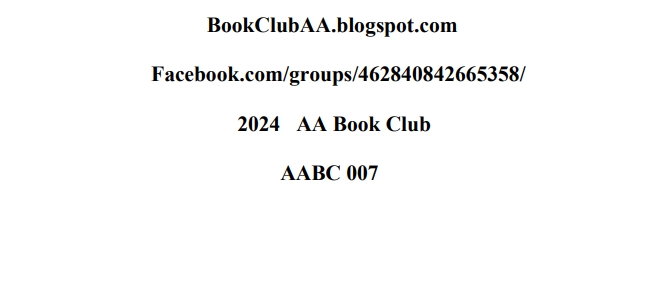




There is indeed a place in scholarly research for the honest
Alan Watts
drudge, who, unwilling to follow the routine paths known to be
unfruitful, is yet unwilling to rest content until he has explored
every possible byway.





There is indeed a place in scholarly research for the honest
Alan Watts
drudge, who, unwilling to follow the routine paths known to be
unfruitful, is yet unwilling to rest content until he has explored
every possible byway.


 Introduction
Introduction
It is sometimes said that "It's the journey, not the destination." How true in compiling this Parallel Passages Project. The Project was first intended merely to compare and contrast the treatment of certain spiritual ideas between the Big Book with the Twelve and Twelve. However, over months of closely reading the Big Book it eventually became clear that while certain passages often suggested associations with related statements in the Twelve and Twelve, there were far more 'Parallel Passages' in the Big Book itself. These internal Big Book parallels were then added to the project, which then began to serve both these purposes. In other words, the course of this journey helped determine the destination, and that destination was both deeper (comparing passages in the Big Book) and wider (comparing passages between the Big Book and Twelve and Twelve) than ever .
This compilation of parallel passages is a deep dive into the two main books outlining the AA program of recovery, and is intended for those who have already swum these waters: Newcomers and those without good working knowledge of the literature may find it baffling. For those with deep interest in the literature, we believe we can make some definite and valuable suggestions:
Being the basic text of Alcoholics Anonymous, the Big Book is, of course, the foundation of this study. The essential parts are reproduced here: Foreword to First Edition, The Doctor's Opinion, the 164 pages, Doctor Bob's Nightmare and the Spiritual Experience appendix. The reader may pick any of these selections and proceed. Parallel Passages from the Twelve and Twelve appear as block quotes in smaller type and indented, with page number and chapter citations in BOLD. Parallels within the Big Book, often more than one for a given passage, are cited by page and paragraph number, also in BOLD and in smaller type. Both types of citation sometimes occur within a Big Book paragraph, and occasionally within a sentence. That this arrangement disrupts the continuity of the original text is unavoidable. Though it is not suitable for casual reading, this method of citation seems to be the best available for intense study.
It is recommended that while going through this study, one ought to have a physical copy of the Big Book for quick reference to parallel passage citations when they occur and are of interest (Twelve and Twelve parallels are included here, as indicated above, though one may want to check that book for fuller context). If one cannot or would rather not do this, those using the web version of this work on a laptop or desktop can access the provided link to a PDF of the Fourth Edition of the Big Book which opens in a new window. This can be arranged side-by-side on the screen with the window displaying this study. Those using the PDF version will of course, be forced to use a book for reference.
This intensive study was compiled and typed completely by hand: "As such, it is bound to have its limitations and imperfections. Nevertheless, one may hope that this new publication will meet a genuine need." (Bill W., Foreword to ABSI) In other words, there may be errors or typos in citations here and there, and certainly some references will not be relevant to everyone. Most of all, it is clear that the topic of parallel passages in and between these two works is far from exhausted here. The modesty of the Big Book is appropriate
AA Book Club


